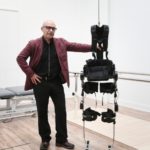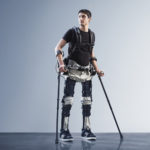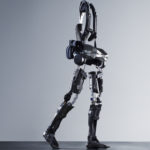AUSTIN, Texas & DUDERSTADT, Germany–(BUSINESS WIRE)–Ottobock, a leading global innovator for prosthetics, orthotics, and exoskeletons, today announced the acquisition of 100 percent of the shares of suitX, a US-based company spun out of the Robotics and Human Engineering Lab at the University of California, Berkeley, which specializes in the research and development of occupational and …
The ‘Iron Man’ body armour many of us may soon be wearing
Imagine wearing high-tech body armour that makes you super strong and tireless. Such technology, more specifically called an exoskeleton, sounds like the preserve of the Iron Man series of superhero movies. Yet the equipment is increasingly being worn in real life around the world. And one manufacturer – California’s SuitX – expects it to go …
UC Berkeley Researchers Motivated by Society, Personal Interests, Scientific Community
Mechanical engineering professor Homayoon Kazerooni, who has developed marketable exoskeletons — wearable devices that assist people who have limited mobility — sees applied research as a more effective means of accomplishing his goals. “There are urgent technological problems that need to be solved since the results would be life changing,” Kazerooni said in an email. …
Paralyzed Man Walks with Brain-Controlled Exoskeleton
A man paralyzed from the shoulders down has been able to walk using a pioneering four-limb robotic system, or exoskeleton, that is commanded and controlled by signals from his brain. With a ceiling-mounted harness for balance, the 28-year-old tetraplegic patient used a system of sensors implanted near his brain to send messages to move all …
SuitX’s Robot Suit Lets Paralyzed People Walk Again
SuitX, a Berkeley startup, has developed what promises to be the lightest, lowest-cost exoskeleton yet — a low-profile robotic suit that helps people who use wheelchairs stand up and walk.
ME Professor Homayoon Kazerooni’s Lab Advances as a Top 20 Finalist in “Robotics for Good” Competition
The Berkeley Robotics & Human Engineering Laboratory’s medical exoskeleton, Phoenix, and its specific use for children with Cerebral Palsy, was named as one of the top 20 finalists in the Robotics for Good competition. Phoenix was chosen from a pool of 664 entries, from 121 countries, in December of 2015. The competition and judging ceremony …





